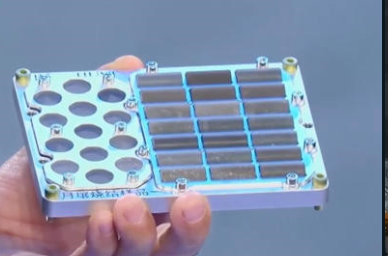China is preparing to send bricks made from lunar soil simulants to its Tiangong space station to test their durability in the harsh conditions of space. These bricks, which are set to be launched aboard the Tianzhou 8 cargo mission, will undergo a three-year experiment to determine their potential use in constructing structures on the moon.
#BREAKING China will send bricks made from simulated lunar soil into space to test the construction of a research base on the Moon.
The bricks will be tested to see how they withstand extreme conditions. pic.twitter.com/cuBmEPpHY8
— NewsPoint (@HaberNoktam) September 9, 2024
The samples will be exposed to ultraviolet light, cosmic rays, and extreme temperature fluctuations in space to assess their strength and durability. This experiment is aimed at identifying the best composition and production methods for creating durable building materials from lunar soil, which would be essential for future moon bases.
One method China is exploring involves heating the lunar soil simulant to over 1,830 degrees Fahrenheit (1,000 degrees Celsius) using electromagnetic induction. This process quickly forms solid bricks, producing a 7-inch-long brick in just 10 minutes.
Using lunar resources for construction, rather than transporting materials from Earth, could significantly reduce costs for future lunar missions. This approach, known as in-situ resource utilization (ISRU), is key to making long-term lunar exploration feasible.
Chinese scientists plan to send bricks made from simulated lunar soil into space to see how they hold up in extreme conditions and if they can be used to build a research base on the moon.
The sample bricks will be sent to the Tiangong space station next month on the Tianzhou-8. pic.twitter.com/hIFXiVhpdb
— China Focus (@China__Focus) September 9, 2024
China has ambitious plans for a lunar base called the International Lunar Research Station (ILRS), which is expected to be built with international partners in the 2030s. The upcoming Chang’e 8 mission, set to launch in 2028, will also experiment with 3D printing bricks on the lunar surface as a step towards building this base.
While NASA and the European Space Agency have conducted similar experiments using lunar simulants, China’s test on Tiangong will be the first to directly evaluate the resilience of lunar soil bricks in the space environment.
Key Points:
i. China will send lunar soil simulant bricks to the Tiangong space station to test their durability in space.
ii. The experiment will assess how the bricks withstand UV light, cosmic rays, and temperature extremes over three years.
iii. The goal is to determine the best composition and production methods for building moon bases.
iv. China aims to reduce costs through in-situ resource utilization (ISRU) by using local lunar materials.
v. This is part of China’s larger plan to build the International Lunar Research Station in the 2030s.
Fallon Jacobson – Reprinted with permission of Whatfinger News


